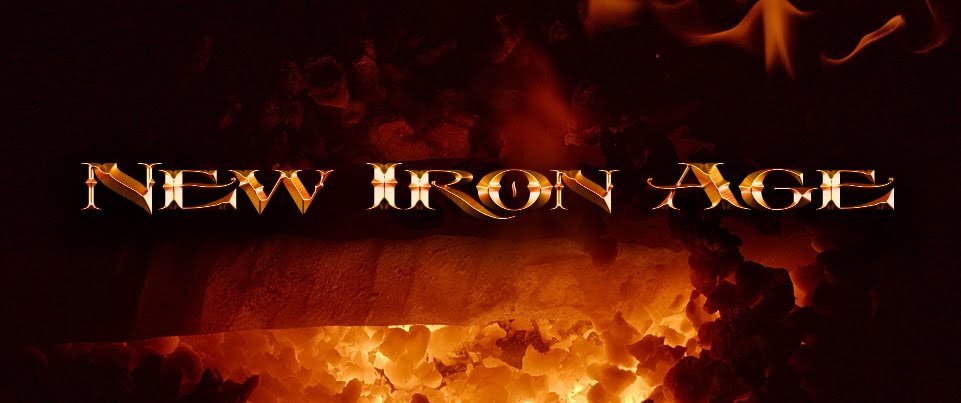A
definite milestone in the birth of the Sword & Sorcery genre was
the creation of the first definitive S&S novel, and as with so
many other aspects, Howard was there first with his only novel-length
work The Hour of the Dragon, a Conan tale to end them all.
(Almost literally, as it was the last Conan story to be published in
his lifetime, though it was not the last one he wrote.)
In
the early 30s Howard was trying to break out of just publishing for
Weird Tales, and one of his major efforts was to try and break
out of the pulps and write books instead. One of the obstacles to
this was that he had never written a book before. He had submitted a
collection of stories to British publisher Denis Archer, which they
rejected, but they suggested a novel of Sword & Sorcery might be
something they would want.
Energized,
Howard worked hard to conjure a novel. He started writing Almuric
– a Sword & Planet adventure in the Burroughs tradition – but
ultimately never finished it. Then he started a Conan novel which
also went nowhere and eventually became the minor story “Drums of
Tombalku”. Finally, sometime around March 17th, 1934,
he started on what would become The Hour of the Dragon.
Reading
it now, it is obvious that he was a relative novice at novel-writing,
as the pacing is much more like what one expects from a short story.
Howard always wrote fast-paced, tightly-plotted fiction, and he
didn’t slow down when he was writing a longer work. He knew his
strengths, and he played to them. The novel is an almost nonstop
barrage of action, opening with a huge battle, and leading through a
succession of bloody confrontations and daring escapes to its tense
climax. It is a Howard story right to the bone.
That
said, it is not the most original of his works. Howard was clearly
aware of the fact that a British audience would not be familiar with
his previous works, and he was in a hurry, so he borrowed rather
shamelessly from his own previous Conan stories to assemble the plot.
The antagonist – the undead sorcerer Xaltotun – is a dead ringer
for Natohk, the villain from “Black Colossus”. The circle of
rebellious nobles who gather to conjure the wizard from death are
definitely reminiscent of the similar crew who drove the story of
“The Phoenix on the Sword”. Conan’s escape through the crypts
is drawn right from “The Scarlet Citadel”, as is the overall
theme of King Conan losing his throne to a supernatural enemy and
then fighting to regain it.
At
around 70,000 words, the novel is extremely short, and yet the
breathless pace would be exhausting if it were any longer. It is
very much a pulp novel, of a piece with novels of the Shadow or the
Spider, where the stories were churned out with such relentless
intensity that the characters had no time to sleep. Maybe Howard
would have learned to ease up and adopt a more novelistic pace if
he’d had more time to practice, but as it is, he never lived to
write more than a few long-form works.
Yet
as derivative of his own stories as it is, Howard manages to conjure
some scenes of real intensity and arresting imagery, as he almost
always did. The opening battle scene, with the clash of warriors
culminating in the epic avalanche, is a hell of a place to start.
Xaltotun is actually a much creepier wizard-back-from-the-dead than
Natohk or Tsotha-Ilanti ever managed. Previously his immortal
wizards were a bit too broad pulp supervillains, while Xaltotun is
more menacing and cool. Conan’s journey through the pits in “The
Scarlet Citadel” was creepy, but The Hour of the Dragon adds
the interlude with the vampire Princess Akivasha, which is so vivid
it stays in the mind long after.
Battles,
escapes, piracy, wizardry, violence, giant snakes, murderous apes –
The Hour of the Dragon is a virtual guided tour through the
lands and dangers of the Hyborean Age, and while for a reader of the
other Conan tales a lot of it is familiar, Howard infuses all of it
with his trademark energy and verve.
Denis
Archer accepted the manuscript, but then went bankrupt in 1934 before
it could be printed. When the book was returned to him, Howard sent
it to Weird Tales, who serialized it from December 1935 to
April 1936. When the last part was printed, Howard himself would
only have 2 months to live.
The
novel was finally printed in book form in 1950 by Gnome Press under
the title Conan the Conqueror, and many later editions
retained the title. In 1977 Karl Edward Wagner oversaw a new edition
which restored the original text and title, and that is the version
that has been reprinted in subsequent editions. It has been
collected and anthologized many times, translated into a dozen
languages, and adapted in the comics over and over. Whatever its
flaws, the book remains the very first full-length Sword &
Sorcery novel.





